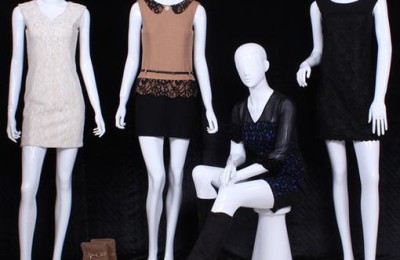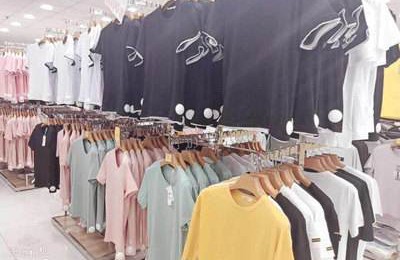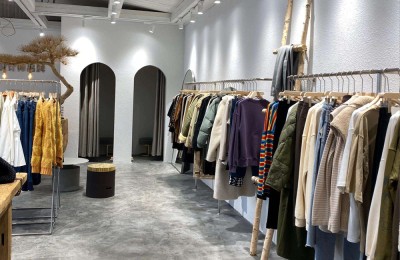35. What are the classification and style characteristics of ramie fabrics?
Answer: There are many types of hemp fibers with different properties. Commonly used ones include ramie, jute, flax and kenaf. Because their performance varies greatly, the process equipment, product quality and uses of fabric finishing are also different. Because hemp fiber is relatively thick, hard, high-strength, and resistant to seawater corrosion, fabric products are mostly used in industrial and marine ropes and nets. Ramie fiber has been widely used in the fields of clothing and decoration. It has superior properties. It can be blended or interlaced with other fibers, such as polyester, spun silk, wool, cotton, etc., to make the fabric have excellent performance and unique style.
(1) Classification of ramie fabrics:
① According to fiber type: it can be divided into pure ramie fabrics, blended chemical fiber fabrics and interlaced fabrics.
②According to the purpose of the fabric: it can be divided into clothing, industrial and decorative fabrics. Clothing fabrics include underwear and outerwear fabrics. Common ramie underwear includes shirts and pajamas. Outerwear fabrics include suit fabrics and skirt materials. Most underwear fabrics are single yarn thin fabrics, which are required to be smooth, crisp, comfortable, cool, soft to the touch, absorb moisture and perspire, making the human body feel comfortable. The outerwear fabric should be thick, crisp and elastic. When taking it in spring and summer, it is also required to be cool, comfortable, plump and flat.
Common industrial fabrics mainly include aircraft wing cloth, hose and construction tent canvas. Its main features are high strength, small elongation, and not susceptible to mold, rot, and insects.
Ramie fabrics are also used in national defense, such as bullet belts, radiation protection cloth and anti-virus cloth. It is characterized by good strength, corrosion resistance, good air permeability and rapid heat and moisture dissipation.
Based on the characteristics of ramie fabric’s ventilation, quick moisture absorption and crisp feel, it can be used as napkins, curtains, tablecloths, bed sheets, wall coverings, etc.
③According to the length of ramie fiber and carding process, there are two types: long linen fiber and short linen fiber. The length of ramie single fiber is about 20~300mm, and the longer one is more than 600mm, and the uniformity is extremely poor. The average fiber length after degumming and combing is about 80 to 100 mm, which is used to spin medium to fine yarn, which belongs to long linen spinning. The fiber length of carded noil (short hemp) is 25-40mm. The coarse special yarns spun by carded wool spinning (fine silk spinning), medium-length spinning or cotton spinning equipment all belong to the short linen spinning system. The long linen spinning system has a large number of merged passes, makes the yarn evenly dry, and adopts the combing process, so the fabric surface is clean and has less grains. It is used to produce work clothes and embroidered handicrafts. Fabrics with medium and fine tex numbers, such as fabrics, are generally fabrics below 40 tex. The short linen spinning system adopts general cotton spinning and medium-length spinning equipment, and is suitable for cotton or cotton-type short fiber blended chemical fiber fabrics. For example, if the carded wool spinning system is used for spinning, due to the small number of process passes, the finished yarn is not ideal and has many details, so the yarn fineness of pure linen yarn and blended chemical fiber fabrics is limited. Generally, hemp and cotton or cotton-type fiber blended chemical fiber fabrics are rough and thick, and are used to make decorative fabrics, wall fabrics, outerwear fabrics, etc.
④ According to the nature of printing, dyeing and finishing: it can be divided into bleached cloth, printed cloth, yarn-dyed cloth and finishing cloth.
Bleached fabric: It contains plain and jacquard weaves. Natural cotton cloth undergoes processes such as singeing, desizing, bleaching, silk finishing, re-bleaching and whitening or coloring, and stenter. According to the different requirements for scouring and coloring, it can be divided into bleached cloth and colored cloth.
Printed cloth: Natural cotton cloth is bleached and then goes through the printing process.
Yarn-dyed fabric: Fabric woven with colored yarn, dyed yarn or fancy thread or fancy yarn. Various types of yarn-dyed fabrics are produced through different printing, dyeing and finishing according to the different uses of the fabrics.
Finished fabrics: In addition to the various printing and dyeing finishes mentioned above, in order to give the fabric a specific appearance and performance, different finishing processes such as embossing, resin, softness, water repellency, anti-shrinkage or fireproofing can also be used to make the fabrics respectively. into a fabric with certain properties.
(2) The style characteristics of ramie fabrics: uneven cloth thickness and obvious striped shadows are the unique style of linen fabrics. Ramie and its blended chemical fiber fabrics or interlaced fabrics are breathable, moisture-absorbing, and sweat-wicking. The characteristics of not being close to the body, as the ramie content increases, the cooling feeling becomes more prominent. Ramie fiber is not susceptible to mold corrosion and insect infestation, so its pure spinning, blended chemical fiber fabrics, interlaced, twisted and other fabrics are durable. The disadvantages of ramie fabric are poor dyeing rate and wet friction, poor color finish, and low fabric elongation.
AAAEHRYJUTUTHYER
Disclaimer:
Disclaimer: Some of the texts, pictures, audios, and videos of some articles published on this site are from the Internet and do not represent the views of this site. The copyrights belong to the original authors. If you find that the information reproduced on this website infringes upon your rights, please contact us and we will change or delete it as soon as possible.
AA








